Higher classification Catharanthus | Genus Catharanthus Rank Species | |
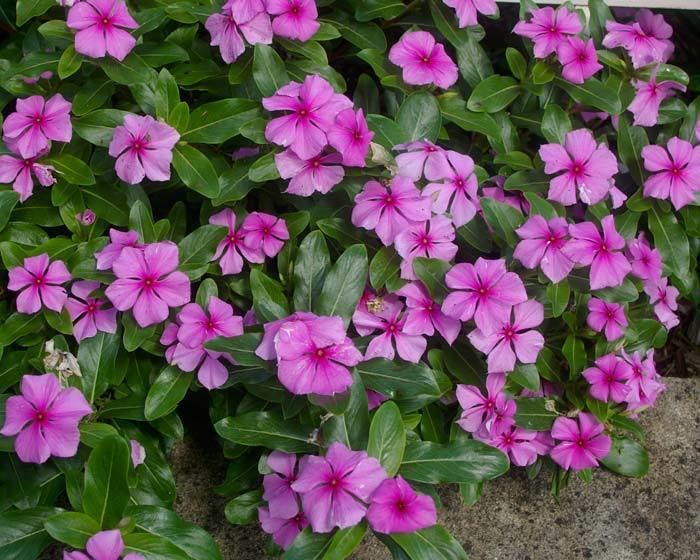 | ||
Similar Catharanthus, Periwinkle, Apocynaceae, Vinca major, Oleander | ||
White sadabahar plant or catharanthus roseus
Catharanthus roseus, commonly known as the Madagascar periwinkle, rosy periwinkle or teresita as it is usually named in the southern part of Mexico, specifically in Champotón, Campeche and Mérida, is a species of flowering plant in the dogbane family Apocynaceae. It is native and endemic to Madagascar, but grown elsewhere as an ornamental and medicinal plant, a source of the drugs vincristine and vinblastine, used to treat cancer. Other English names include Vinca, Cape periwinkle, rose periwinkle, rosy periwinkle, and "old-maid". It was formerly included in the genus Vinca as Vinca rosea.
Contents
- White sadabahar plant or catharanthus roseus
- Catharanthus roseus plant s 1st step of bonsai
- Synonyms
- Description
- Cultivation and uses
- Chemical constituents
- Other names
- References
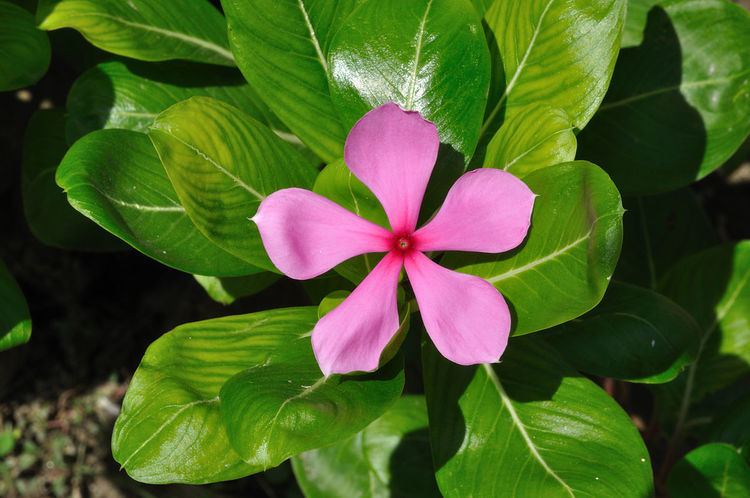
Catharanthus roseus plant s 1st step of bonsai
Synonyms
Two varieties are recognized
Description
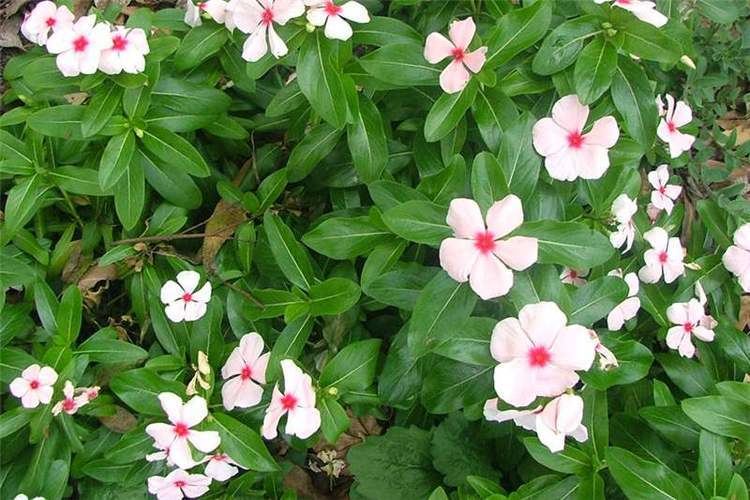
It is an evergreen subshrub or herbaceous plant growing 1 m tall. The leaves are oval to oblong, 2.5–9 cm long and 1–3.5 cm broad, glossy green, hairless, with a pale midrib and a short petiole 1–1.8 cm long; they are arranged in opposite pairs. The flowers are white to dark pink with a darker red centre, with a basal tube 2.5–3 cm long and a corolla 2–5 cm diameter with five petal-like lobes. The fruit is a pair of follicles 2–4 cm long and 3 mm broad.
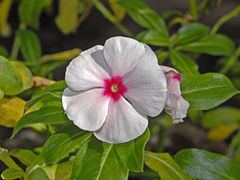
In the wild, it is an endangered plant; the main cause of decline is habitat destruction by slash and burn agriculture. It is also however widely cultivated and is naturalised in subtropical and tropical areas of the world. It is so well adapted to growth in Australia, that it is listed as a noxious weed in Western Australia and the Australian Capital Territory, and also in parts of eastern Queensland.
Cultivation and uses
The species has long been cultivated for herbal medicine and as an ornamental plant. In Ayurveda (Indian traditional medicine) the extracts of its roots and shoots, though poisonous, is used against several diseases. In traditional Chinese medicine, extracts from it have been used against numerous diseases, including diabetes, malaria, and Hodgkin's lymphoma. Many of the vinca alkaloids were first isolated from Catharanthus roseus. The substances vinblastine and vincristine extracted from the plant are used in the treatment of leukemia and Hodgkin's lymphoma.
This conflict between historical indigenous use, and recent patents on C.roseus-derived drugs by western pharmaceutical companies, without compensation, has led to accusations of biopiracy.
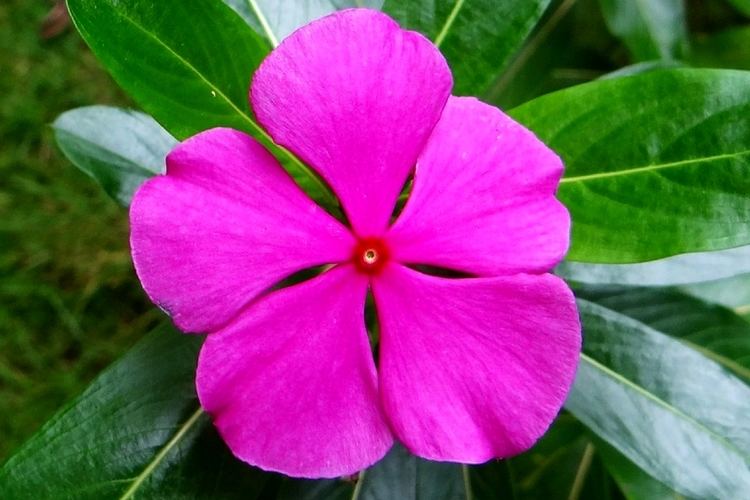
C. roseus can be extremely toxic if consumed orally by humans, and is cited (under its synonym Vinca rosea) in Louisiana State Act 159.
As an ornamental plant, it is appreciated for its hardiness in dry and nutritionally deficient conditions, popular in subtropical gardens where temperatures never fall below 5 °C to 7 °C, and as a warm-season bedding plant in temperate gardens. It is noted for its long flowering period, throughout the year in tropical conditions, and from spring to late autumn, in warm temperate climates. Full sun and well-drained soil are preferred. Numerous cultivars have been selected, for variation in flower colour (white, mauve, peach, scarlet and reddish-orange), and also for tolerance of cooler growing conditions in temperate regions. Notable cultivars include 'Albus' (white flowers), 'Grape Cooler' (rose-pink; cool-tolerant), the Ocellatus Group (various colours), and 'Peppermint Cooler' (white with a red centre; cool-tolerant).
C. roseus is used in plant pathology as an experimental host for phytoplasmas. This is because it is easy to infect with a large majority of phytoplasmas, and also often has very distinctive symptoms such as phyllody and significantly reduced leaf size.
Chemical constituents
Rosinidin is an anthocyanidin pigment found in the flowers of C. roseus.
Vincristine and vinblastine, chemotherapy medications used to treat a number of types of cancers, are also found in the plant.
Other names
C. roseus is known as boa-noite ("good night") and maria-sem-vergonha ("shameless maria", name shared with Impatiens and Thunbergia alata) in Portuguese (American), vinca-de-madagáscar, vinca-de-gato ("cats' vinca"), vinca-branca (white vinca), vinca or boa-noite in Portuguese (European), vinca del Cabo, vinca rosa ("pink vinca") or vinca rosada ("roseous vinca") in Spanish, putica ("little whore") in Venezuela, "İzmir Güzeli" in Turkish (meaning Smyrna beauty) indicating the city that has the best climate conditions for it to flourish in Turkey, and "Dhafnaki" [in Greek Language Δαφνάκι] (meaning little Daphne) in Greece and Cyprus.
